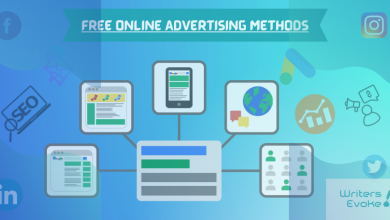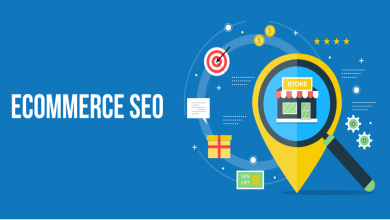The B2B Marketing Plan For 2020
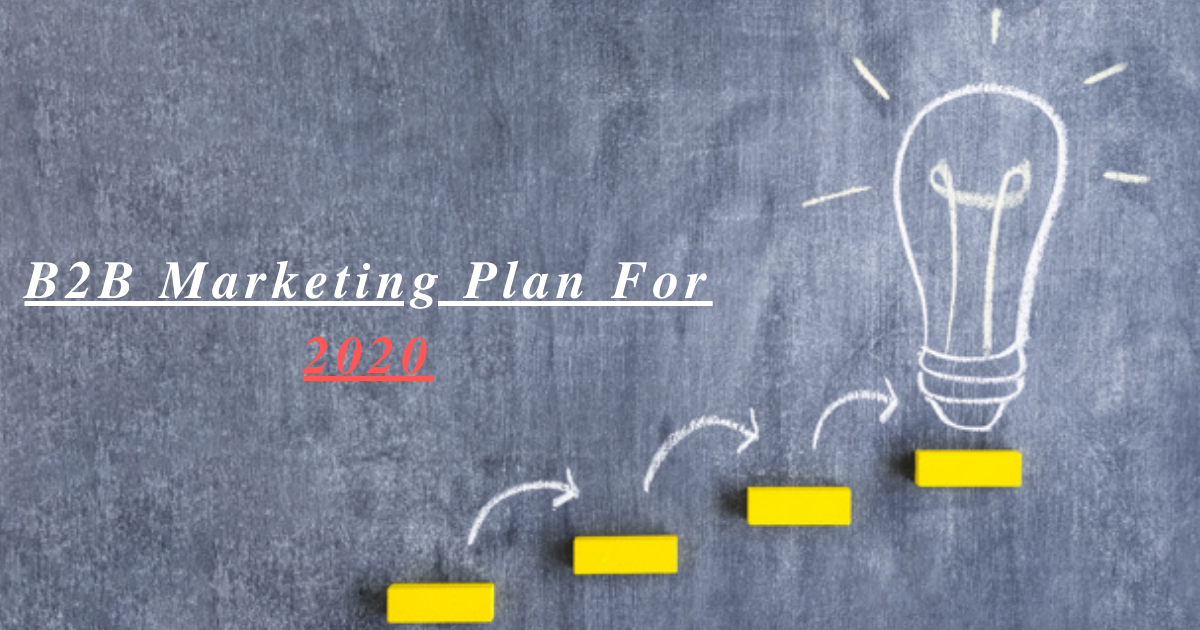
Index Of The Blog
B2B Marketing Plan in 2020
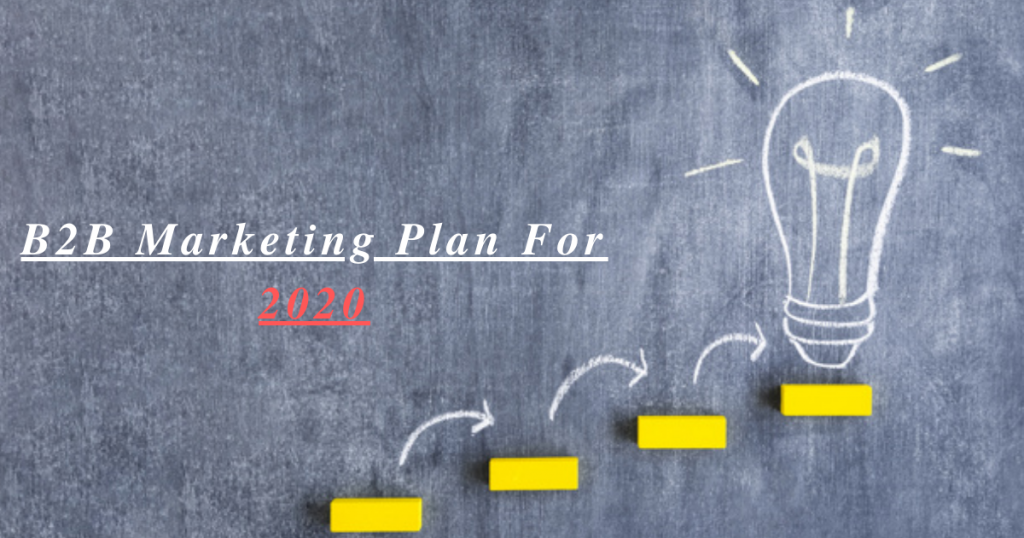
If you are looking to grow your B2B tech company through digital marketing, this B2B Marketing Plan in 2020 to start.
It’s packed with the strategies that will help you develop new client relationships and nurture existing ones, all ordered in a simple-to-follow guide.
Generally, these tactics are presented sequentially, meaning that they’re best tackled in order. But it’s likely that you have more experience in certain areas and less in others, so feel free to jump around to the sections that are most useful for you.3.
Also Know: B2B Content Marketing Trends and Statistics in 2019
Everything you’ll need to market your B2B tech firm is here. We’ll cover:
Marketing Strategy for B2B Technology Firms

In B2B tech marketing, as in most things, the best place to start is with strategy. Having a sound strategy in place will help to ensure that tactics are aligned toward the right ends. B2B Marketing Plan in 2020
It’s worth noting here that, traditionally, many B2B tech firms have grown on the basis of relationship marketing. (If you’re in a newer subsection of the tech space, like SaaS, this may not apply to you – but if you’re in a more developed space like specialized manufacturing or technology integration, it almost certainly does).
We do agree that B2B tech firms, due to the nature of serving other businesses with high-value service items, tend to have a high percentage of referral-based sales.
But that only highlights how few B2B tech firms truly use online marketing well – and, by the same token, how much opportunity is out there for smart B2B tech firms to use online marketing as an advantage.
With that said, the core of marketing strategy for B2B tech firms revolves around four stages: awareness, convert, close, and delight.

Awareness
- Blogging
- SEO
- Social Media
- PPC
- Networking
Convert
- Landing Pages
- Content
- Call-to-actions
- Forms
Close
- Email Marketing
- CRM
- Automation
Delight
- Email Marketing
- Social Media
- Surveys
The Awareness Phase
The Awareness Phase is all about getting your business’s name out there. Many tech organizations are struggling in this space – which is a big problem. This is the most critical area of the entire funnel, since it’s the engine for every other stage.
Trying to market without awareness is like trying to build a car without a motor.
You simply need traffic and contacts to make your marketing run. With without good awareness, you’ll never have enough opportunities to leverage for growth in your company.
At its most basic level, this stage is about making your customer aware of your business. There are so many ways to do this, but we’re going to stick to the ones that don’t involve a chicken suit and a street corner.
The tactics we’ll cover are tried and true methods of marketing online. B2B Marketing Plan in 2020.
The Convert Phase
Once you have traffic to your website, the next phase is to convert that traffic into potential customers. This is the essence of the convert phase. Now, the big question: how do you do that?
Most people think of websites as having one major call-to-action (or CTA, as we marketing people call them): the “Contact Us” page. This is great for customers who are ready to do business right now – which would be maybe 1 out of every 10,000 visitors to your site.
So, what do you do with the other 9,999 visitors?
The answer is to engage them where they are with content that helps to solve a problem they have. For example, if you are a managed services provider, you might have a downloadable Cybersecurity Policy Template. Potentially interested readers get a valuable PDF full of help, and now you have one more potential client in your contact list. Brilliant!
The key to success in this is to create conversion points for each offering you have. In other words, give anyone who could be interested in doing business with you an opportunity to learn more before fully committing. Done well, you can convert 2-5% of all visitors to your site with relative consistency.
This is the key to creating lasting results in online marketing.
The Close Phase
Most of the closing phase happens on the phone and in the boardroom. When a client reaches out to you for a proposal or conversation, revolution of digital marketing might not come into play immediately – but don’t write it off just yet.
You’ll still be doing a good bit of email marketing during the closing phase. This might be through case studies, samples of your work, or through information sheets.
Shouldn’t you put as much effort into those emails as you would put into your outreach emails? B2B Marketing Plan in 2020.
You are going to need a solid proposal template, a great PowerPoint template, and the savvy to work a presentation in the close phase. But your emails and social media content can also lend a hand when it comes to closing the deals.
Also Know: Digital Marketing Tools for 2020
The Delight Phase
Your marketing enters a different phase once a lead becomes a client. But you still have to present a solid marketing effort to your clients.
For most B2B firms, longtime clients and referrals are important to your long-term success. Happy clients will tell others and might make the right connection for you in the future.
You’ll use email marketing here in varying degrees. You might have a newsletter that keeps them updated on your latest innovations, services, and products. This can play a large role in validating your expertise in the midst of changing tech landscapes.
And, of course, you’ll use personal emails to connect with clients periodically to build relationships.
Common Challenges with the Phases
There are two common problems that can hinder you from effectively implementing this sales and marketing methodology.
The first and most common mistake is to put a potential client in the wrong phase. You might have someone reach out to you after briefly visiting your website asking for a proposal or quote. This could be good, but unless they have the necessary information, they’re not really qualified to be in the Close Phase yet. They’re not really aware of your service; they don’t know what makes your company unique. B2B Marketing Plan in 2020.
The second mistake is to ineffectively distribute effort to phases. Here’s our recommendation: 80% of your effort needs to be in the Awareness (or “prospecting”) phase of the funnel. Of the remaining 20%, 10% should be spent on Conversion, with the rest split between Close and Delight.
Everything is dependent on generating traffic and building an audience. Each phase is much easier to optimize if you actually have Awareness.
Marketing Is a Marathon, Not a Sprint
A last word of encouragement before we move to the next section: your marketing plan will be a marathon. There are small victories, but it’s an endurance game. Stick it out to the end. Create the right materials and do the right activities to keep your company growing.
Websites for B2B tech firms
Okay, we’ve covered strategy. Now, let’s get into tactics.
The most important aspect of your marketing will be your website.
It’s your virtual leave-behind, it’s your storefront, it’s your presentation deck, and it’s even more. The website is absolutely the central piece of all your marketing, lead generation, and conversion efforts.
So, it needs to be fantastic.
Seek Simplicity and Focus
There is so much to write about website design and conversion optimization, but the most important thing to understand is that your site cannot be about you. B2B Marketing Plan in 2020.
It has to be about your client finding the solution to their problem.
What does this look like? It looks like a website that talks to your potential customer, not a website that talks at them with jargon and humblebrags featuring the stats and successes of your company. (There is a time and place for success stories, but it’s not everywhere on every page.)
Each page has a mission – so let’s talk about each page.
Service/Solution Pages
This is somewhat straightforward: Your B2B tech firm’s solution pages should focus on the solutions you provide. But things get a bit more interesting if we bring our phases to bear on these pages.
In other words, what purpose should these pages serve in your funnel? The answer, generally, is that they should drive both awareness and conversions; they should bring traffic to your site and play a role in converting that traffic into contacts and leads.
If you’re location-based, the SEO focus for these pages should be SOLUTION in LOCATION. Your local SEO (people finding you in your town via Google Map listings or “snack pack” listings) will benefit from this focus.
As far as conversion efforts go: You should have a call-to-action to contact you for more information, but you should also have a higher-funnel takeaway. This might be something of a self-help, or a tips guide for that service that your potential visitor can sign up for (read: give you an email address for). You win, as you now have a new potential client email and they get some help or value on the way.
Case Studies or Client Pages
This is where you get to talk more about yourself. But even while you’re talking about yourself, you need to be keeping your clients’ needs in the spotlight.
The bottom line here is that to offer “social proof” that your business works. People need to know that it does what you say it does and that it’s worked for others like them in the past. This can be done in a few different ways.
The most important way is to have testimonials. This is important as your visitors will want to hear how its worked and what it will be like for them. You should collect 5-7 testimonials to start; that’s all you’ll need for the time being. (Later, you may want to bring these to life in a video format – it can increase engagement.)
Second, you’ll want to include at least one case study. Walk through a problem-solution scenario or discuss how your products or services were rendered to solve the problem. This should be done in good detail, as the client will spend time here trying to figure out if your solutions will work for them. B2B Marketing Plan in 2020.
Third, you can feature a list of clients. If you’ve worked with a variety of impressive clients, this is a chance to impress. If you’re unsure whether your clients should be featured, here’s some food for thought: one, you have to put a fair number of your clients out there to make it seem like you’re not small, and two, if you do, you give your competitors the majority of your client list. If you’re deliberating whether this is worth it, it’s probably not.
The B2B Tech Firm Blog
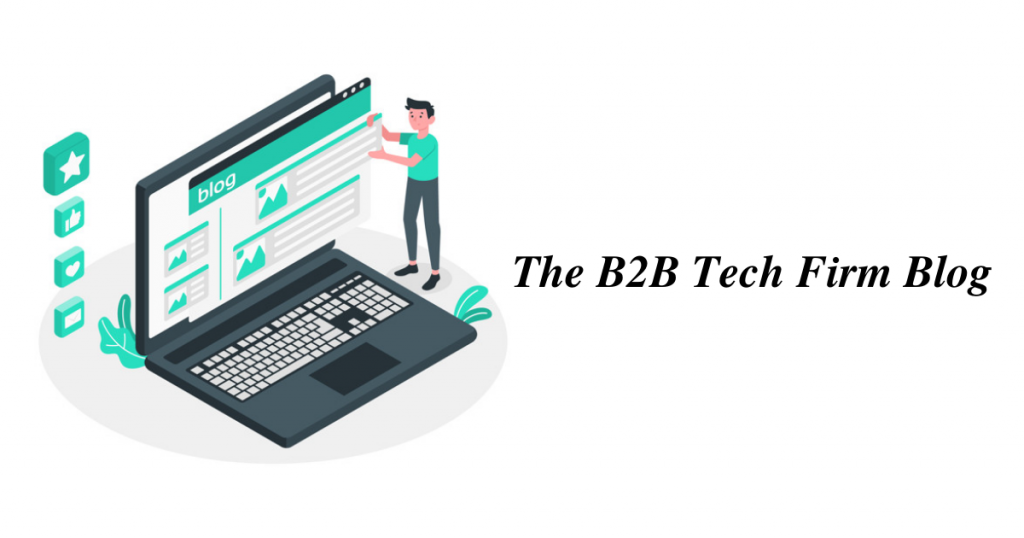
Yes, you’ll need a blog. Here’s why: The blog is the best place to grow your site content to fulfill an SEO strategy. you can use a popular CMS like WordPress, joomla etc. to publish your blog or use a third party CMS like medium. You can also find some medium alternatives here.
Ideally, there should be blogs written for your website quite frequently, because Google loves sites that produce content. Additionally, you should take the time to develop a keyword strategy.
You see, blogging is not about writing to your whims; it’s a strategic exercise in writing thought-provoking content around keywords and topics that are of interest to potential clients in different phases of your funnel.
You might get a chance to write about your hopes and dreams, but mostly you’ll be writing topics that will help you achieve valuable rankings in search engines like Google.
The Contact Us Page

Your contact us page should be pretty basic. Include all the request-a-contact information potential clients might need and feature a contact form to help people submit requests after hours. You might even try some more to-the-point technologies to get intro consultations automatically scheduled – tools like Calendly or Hubspot are great for this.
Keep it simple, but also set expectations on what they will get when they contact you. This might mean having a brief statement about what you’ll discuss and how long it might take. (Here’s our contact page, for example.)
The Conversion Forms
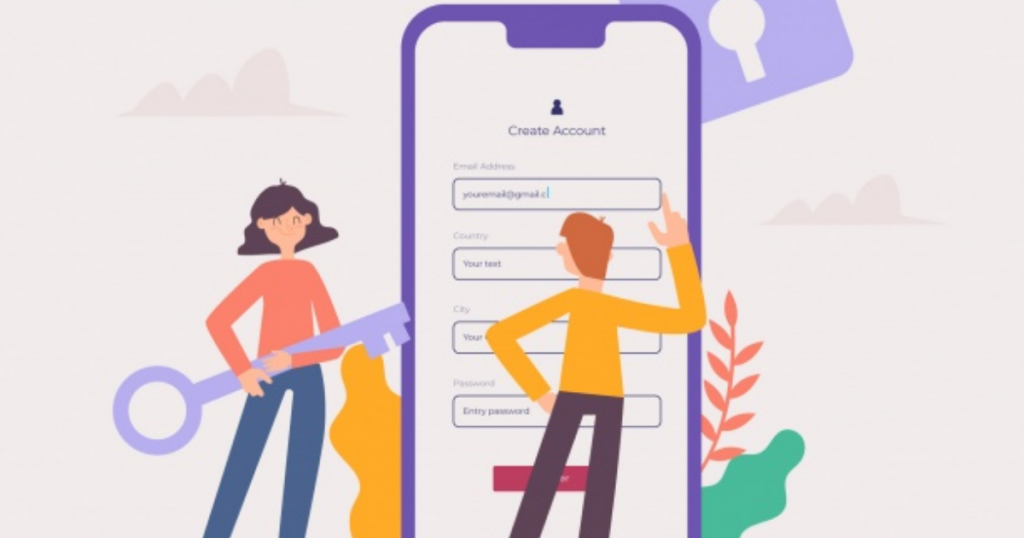
Throughout your site, you will have content that will serve to generate conversions: whitepapers, eBooks, webinars, demo videos – all of those content pieces we talked about early on that will address different services and different stages of your conversion funnel.
Each should have a page for download, and you’ll want to make those pages work better and better each month. Conversion is an impactful lever; if you have 1,000 visitors a month and a conversion rate of 1%, that’ll give you 10 contacts a month. Boost your conversion rate to 3%, and you can triple your monthly contacts to 30, greatly increasing the number of leads that you have.
Email Marketing for B2B Tech Firms

Email marketing will be the workhorse of your online marketing. It’s used in every phase of your funnel, and it ranges from very personal to blasts that are geared to groups of contacts. Here’s how it plays out. B2B Marketing Plan in 2020.
The Types of Emails You’ll Send:
Thought Leadership Email
This is typically what we refer to as an “email newsletter.” In the past, newsletters have been much more about the company and its internal news, but now the shift in the sales and marketing process turns the newsletter into a value presentation to the client.
You’re sending insight and content to the recipients to deliver value.
Sales Drip
This is a series of emails that you will send after someone downloads your content. So, if someone downloads an ebook or signs up for a newsletter, you’ll send them this drip series of emails. It’s an automated series that includes the following five emails by topic.
- Thank You – This is an email thanking the user for downloading your content and establishing good will.
- Problem/Solution – This is an email that explains a common problem and your solution to that problem.
- Objection – Overcome a common objection to your services and why your solution is best.
- Testimonial – An example of a successful execution of your service.
- Sales Letter – This is the ASK of the entire sequence, where you focus on the sales effort.
Each one should be sent about a day or two after the previous email – unless you have a particular strategy in mind, don’t wait longer than that. You don’t want recipients to forget your brand and solution before your next email arrives. B2B Marketing Plan in 2020.
Direct Email
Direct email is really just normal email, or what marketers might call personalized emails. Sending sales-based emails should be a regular part of your sales and marketing process. These include the following types of emails.
- Check-Ins – Seeing how the client is doing personally or professionally.
- Updates – Sending updates about your company that might impact the client.
- Value-Add – Finding an article or piece of content that might be of value to your potential client or current client.
Service/Solution Reminders
No matter how long a client works with you, they will need to be reminded of your solutions – otherwise, they’ll likely forget what you do. Many times, a client will pigeonhole you into the specific offering they’re receiving from you, even if that’s not your best offering or your most profitable. They might even have a problem in an area your solutions can address and not know how to solve it.
Your reminders are simply ways of letting them know what you do, who you’ve done it for, and what they can expect in the process.
It’s important to frame your solutions in your reminders as “core solutions” rather than “new” solutions. New solutions are open to scrutiny, whereas core solutions are reliable. So, make sure you don’t launch new solutions over email; rather do it on a case-by-case basis and target those who can benefit. Once your new solution is vetted, you can roll it out as a reminder to all clients.
Feedback
Lastly, the feedback email is important for evaluating how well you’ve done for your clients. This is a great source for testimonials, NPS scores, or any other feedback mechanisms you might need to shore up your service and optimize it for the better.
You can use a simple survey platform like Survey Gizmo and send your emails out in your current email service provider with links to provide feedback.
Social Media Marketing for B2B Tech Firms

The short answer: in B2B tech, social media serves more as validation than as lead generation. But it can serve all phases of the funnel, depending on strategic goals and your business context. At the end of the day, it’s a necessary element to any online marketing presence and should be considered for most B2B tech firms.
Also Know: Social Media Marketing for Companies
Here’s why.
Besides the fact that just about everyone is on social media in some capacity, being on social media serves two purposes for you as a B2B tech company:
First, it gives you increased credibility and shows that you’re up to date with the world’s technology. This is a shallow reason, but a good one.
Second, it will allow you to promote your brand and demonstrate your expertise to an audience on a regular basis.
Facebook Marketing for B2B tech firms
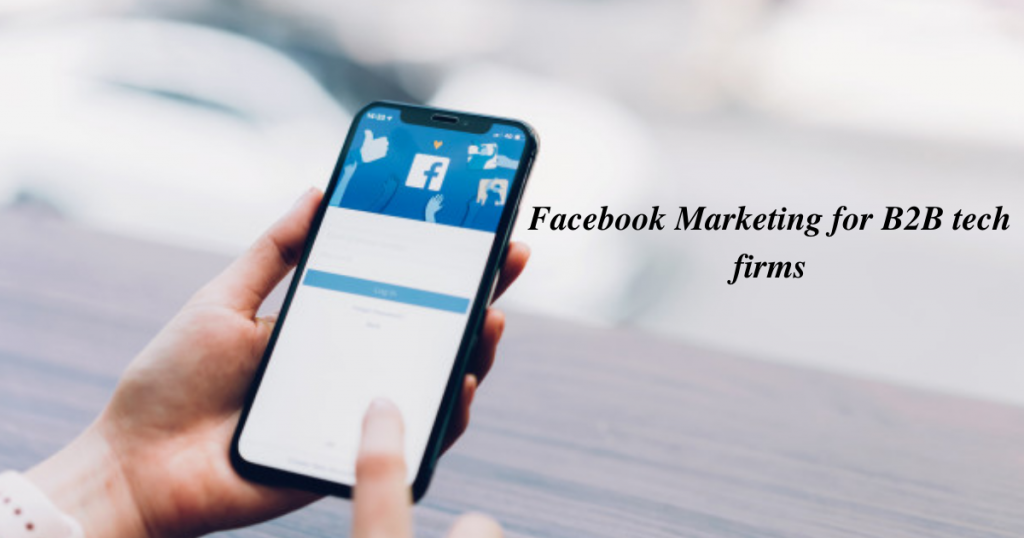
This one is tricky, but I’d say do it, mainly because it serves as validation that you exist. B2B Marketing Plan in 2020.
Today’s algorithms have relegated business page posts to obscurity. If you post organically (meaning without paying for a boost), you’ll show to a sliver of your follower base. But people still check Facebook pages to see if businesses are active. Having one is like having a pulse.
Additionally, though, Facebook can be a viable channel for paid promotion, which we’ll cover shortly.
For now, focus on sharing good content and innovative ideas to bring value to potential followers.
LinkedIn Marketing for B2B Tech Firms

This is basically a requirement. If you’re planning to use social media for B2B lead generation, this is the best channel to do it on. You can successfully use LinkedIn marketing to network and meet new people; you can also use it to bring value to your connections.
I’d recommend joining groups where you can add value to conversations and become the expert. Think of it as a small speaking engagement. Use the discussion to further extend your business’s expertise and build value in the marketplace.
You can also use LinkedIn to network. I’ve connected with many people over LinkedIn, who later became clients or referral sources. The key is to bring the connection into real life. Meet for coffee or pick up the phone for a call. A LinkedIn connection does no good for you if they’re only a LinkedIn connection.
Twitter Marketing for B2B Tech Firms

This is good as long as you match it to your needs. If you are not someone related to the hyper speed of consumer media, then I’d take a pass. But if you are a B2B tech firm who deals with the financial markets, quick-moving cybersecurity or software landscapes, or something similar, then be on it.
The key to Twitter is to be on it, frequently. That means posting something at least every other day as a means to reach your audience. This could be a retweet or original content. Images and videos are also great. As always, keep your twitter marketing focused on adding value to your customer base.
Tactically, a few points: Connect with new people every week. Use hashtags as much as possible. And follow the trending bigger conversations.
Instagram Marketing for B2B Tech Firms
Don’t do it.
Pinterest Marketing for B2B Tech Firms
Ditto.
Advertising for B2B Tech Firms

Okay, we’ve reached the final step in our marketing plan: paid advertising.
You’ve created all your sites. You’ve built your brand’s assets. You have your messaging (mostly) down. Now it’s time to attract clients through paid advertising.
Also Know: B2B Content Marketing Trends and Statistics in 2019
You will receive a good bit of attention from your site and social media just by consistently creating content that’s strategically targeted. But there will come a point when you will want to “turbo charge” your marketing efforts with online advertising.
Here are some of the options to consider:
Google Advertising
Google advertising will be your best bet to create some traffic for your website. There are lots of details on how to create good advertising. We’ve written some extensive posts on how to set up ads and how to adjust your Google Ads budget. The important thing to know is that Google is a good investment if it’s done right. There is a reason that this is a staple of online advertising. It’s extremely powerful. It’s also extremely dangerous, because if it’s not done right it can be like throwing money down the drain.
The challenge is that you will not be the best person to set this up.
This is definitely a task that is best suited for the experts, simply because they will get better results than you will alone. This goes for most advertising spending. B2B Marketing Plan in 2020.
Facebook Advertising

Facebook ads have two things going for them: One, it’s very likely that you have some customers and potential customers on Facebook. So, it’s a good channel to try. Two, Facebook has a ton of targeting options, so it can be pretty powerful and effective – you can reach people with very specific messages.
Again, to make it work really well, it’s probably best to hire someone to do it.
But you should set up your page (as we discussed in the earlier section) and establish a presence – even if only to be current and show that your business has a pulse.
Also Know: Difference Between Facebook and YouTube Video Marketing
Buying Email Lists
A word of warning here: In many cases, I’d advise not buying email lists.
Here’s why.
- The quality is typically poor, meaning they have low open rates.
- Even if you’re promised the list will be relevant, it probably will have old contacts on it.
- It’s unsolicited email, so you are, in fact, SPAMMING your potential customer.
All of this said, there are a few scenarios where email lists make sense.
ABM (Account-Based Marketing Campaigns)
When you have a specific and known target, purchasing a list can allow you to reach them effectively (provided the list is good).
Generally, subscription services like DiscoverOrg are the best solutions for this – you’re technically not buying a list, just access to a supposedly-up-to-date contact database – because they have the most recent information (as opposed to static one-time exports).
Branding

If you have a very large budget, you could potentially use a purchase list for a branding campaign, with a content offering or top-of-funnel conversion piece as the email’s call-to-action.
In general, though: build your list over buying it.
Google Remarketing
This is one of our favorite B2B online advertising options. The premise behind Google remarketing is that you only show ads to the people who have visited your site. You’re focusing on a very specific audience to present them with more targeted information and messaging in your ads.
Once a user visits your site, a cookie is set on their computer. When they visit a site that participates in the Google network, your ad shows. It’s very effective and targeted, which helps in the display ad realm; before retargeting, this was a “spray and pray” ad platform, which we typically don’t recommend.
From the basic premise, you can get far more complicated quickly. For instance, you can target visitors to your service pages with a service-specific message, while targeting visitors to your case study page with another. The gist, though, is that you’re able to target messages based on user activity and interest. B2B Marketing Plan in 2020.





